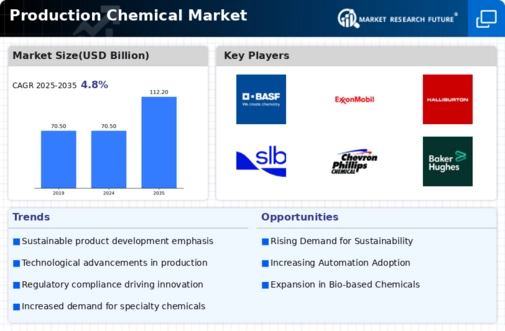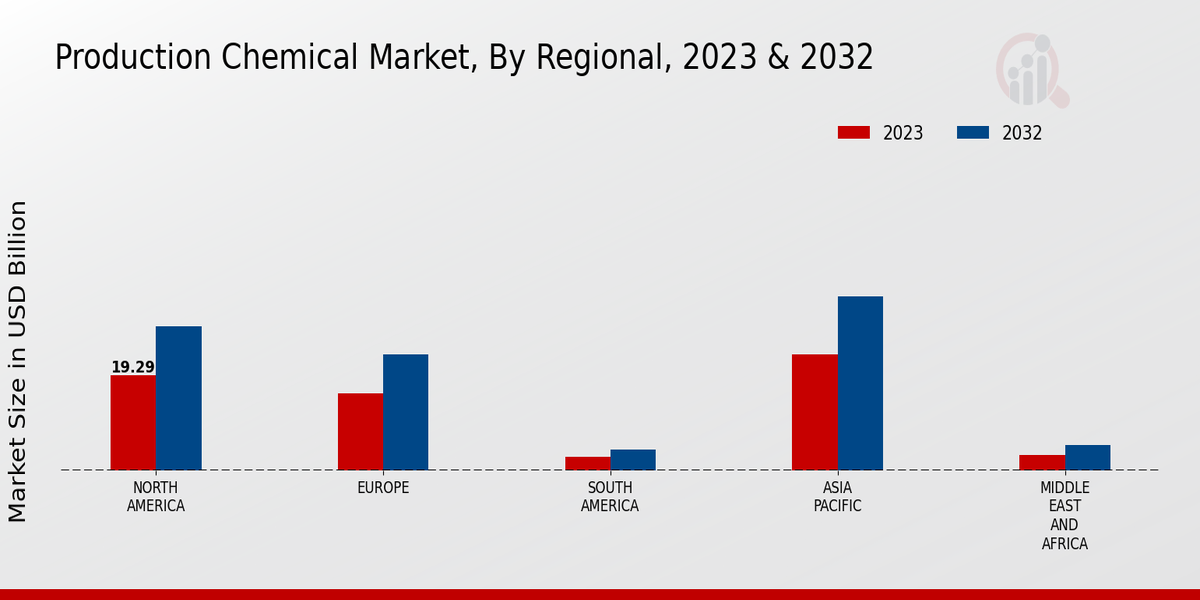Market Trends and Projections
Rising Demand for Sustainable Chemicals
The Global Production Chemical Market Industry is witnessing a notable shift towards sustainable and eco-friendly chemicals. This trend is driven by increasing regulatory pressures and consumer preferences for environmentally responsible products. Industries such as agriculture and personal care are actively seeking sustainable alternatives, which is expected to bolster market growth. As a result, the market is projected to reach 70.5 USD Billion in 2024, reflecting a growing commitment to sustainability. Companies are investing in research and development to innovate and produce greener chemicals, thereby enhancing their competitive edge in the Global Production Chemical Market Industry.
Global Population Growth and Urbanization
The Global Production Chemical Market Industry is significantly influenced by global population growth and urbanization trends. As urban areas expand, there is a heightened demand for construction materials, personal care products, and agricultural chemicals. This demographic shift is driving the need for production chemicals that cater to the growing urban population's needs. The increasing focus on infrastructure development in emerging economies further amplifies this demand. Consequently, the market is poised for substantial growth, aligning with the projected increase in market value to 70.5 USD Billion in 2024, as urbanization continues to reshape consumption patterns.
Regulatory Support for Chemical Innovation
Regulatory frameworks are increasingly supporting innovation within the Global Production Chemical Market Industry. Governments worldwide are implementing policies that encourage the development of safer and more efficient chemical processes. Initiatives aimed at reducing environmental impact and promoting sustainable practices are fostering a conducive environment for growth. For instance, regulations that incentivize the use of bio-based chemicals are likely to drive investment in research and development. This regulatory support is expected to contribute to the market's growth, with projections indicating a rise to 112.2 USD Billion by 2035, as companies adapt to evolving standards.
Expanding Applications Across Diverse Industries
The versatility of production chemicals is a key driver for the Global Production Chemical Market Industry. These chemicals find applications in various sectors, including automotive, construction, and pharmaceuticals. The increasing demand for high-performance materials and specialty chemicals is propelling market expansion. For example, the automotive industry is increasingly utilizing advanced coatings and adhesives, which are derived from production chemicals. This trend indicates a robust growth trajectory, with a projected CAGR of 4.32% from 2025 to 2035, as industries continue to explore innovative applications for production chemicals.
Technological Advancements in Chemical Production
Technological innovations play a pivotal role in shaping the Global Production Chemical Market Industry. Advancements in production processes, such as automation and digitalization, are enhancing efficiency and reducing costs. For instance, the adoption of artificial intelligence and machine learning in chemical manufacturing is streamlining operations and improving product quality. These technologies not only optimize resource utilization but also minimize waste, aligning with sustainability goals. As the industry embraces these innovations, it is likely to experience accelerated growth, contributing to the projected market value of 112.2 USD Billion by 2035.






















